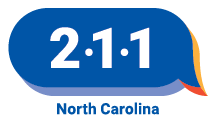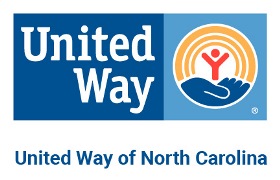Medicare is the federal government program that provides health insurance to people age 65 or older, people under age 65 who have received Social Security Disability Insurance (SSDI) for at least two years, and people under age 65 who have end-stage renal disease that requires dialysis. Medicare is funded through Social Security and Medicare taxes, premiums, and the federal budget.
Medicare comes in four parts, and each part covers a different service or type of insurance.
Medicare Part A covers hospital inpatient care, some types of home health care, hospice care, and care in skilled nursing facilities. You may be required to pay a monthly premium if you have less than 40 working quarters.
Medicare Part B covers certain doctor’s services, outpatient hospital care, preventive care, medical supplies, and some home health care. You must pay a monthly premium for Part B. The premium is $148.50 for individuals with an income of less than $88,000 a year and couples with an income of less than $176,000. Higher-income beneficiaries pay more.
Medicare Part C, also known as Medicare Advantage, is a different way of getting your Part A and Part B benefits. Instead of the government paying your provider directly, Part C plans are run by Medicare-approved private insurance companies. Each Medicare Advantage plans can charge different out-of-pocket expenses. If you choose to get your benefits through Part C, you must also be enrolled in Part A and Part B.
Medicare Part D covers prescription drugs. This is an optional benefit added on to your original Medicare plan.
Who is eligible for Medicare?
Generally, Medicare is available for:
- People age 65 or older
- Younger people with a disability
- People with End Stage Renal Disease
How to Enroll?
If you are already receiving Social Security benefits, Medicare will automatically enroll you. If not, you must enroll on your own either online through Medicare.gov or at a Social Security office. Find your local Social Security office.
When you’re first eligible for Medicare, you have a 7-month Initial Enrollment Period to sign up for Part A and/or Part B. CLICK HERE to learn more.
When to sign up for Part AEveryone who becomes eligible for Medicare should sign up for Part A immediately, because it has no premium. This is true even if you are still working and have health insurance through your job.
You can search Part A plans through Medicare.gov or call 1-800-MEDICARE (1-800-633-4227) for more information.
Signing up for Part B is trickier. Signing up at the wrong time may cost you money.
If you are already retired or will retire right at age 65, you should sign up for Part B the same time that you sign up for Part A. It’s really important to understand the process. If you don’t sign up for Part B when you should, you will have a harsh late penalty. The penalty is a permanent increase in your Part B premium of 10 percent for every year that you should have been enrolled but weren’t.
You can search Part B plans through Medicare.gov or call 1-800-MEDICARE (1-800-633-4227) for more information.
These situation wills help you decide what you should do about signing up for Part B.
- You receive financial help to buy an individual health plan through your state’s Health Insurance Marketplace. Once you become eligible for Medicare, you can no longer get a subsidy. If you keep the plan anyway, you will get that late Part B enrollment penalty. Sign up for all parts of Medicare and cancel your Marketplace plan.
- You have an individual health plan but don’t receive a subsidy to help pay for it. If you keep this plan instead of enrolling in Medicare when you turn 65, you’ll be hit with the late enrollment penalty. It doesn’t matter where you got it or how long you’ve had it. Cancel it and enroll in Medicare.
- You are working at an employer with 20 or more employees. You can delay Part B enrollment without a penalty if you have health insurance through your own or a spouse’s current job. Once the last working spouse leaves his or her job, even if they’re getting COBRA or retiree insurance, it’s time for both of you to sign up for Part B. You have eight months, starting the month after the job ends, to get this done without penalty.
- You are working at an employer with fewer than 20 employees. Sign up for Part B at 65. Your employee health plan then becomes a “secondary” plan that pays for things only after Medicare has paid its share of the bills.
- You or your spouse is on COBRA. Once you turn 65 you must switch to Medicare or face the late enrollment penalty. But COBRA can still function as the main insurance for the younger spouse, and you can keep parts of your COBRA plan that Medicare doesn’t cover, such as your dental benefit. Learn more about Medicare and COBRA.
- You have a retiree plan. If you have a retiree plan from your old job, you must sign up for Part B when you turn 65. After you go on Medicare, the retiree plan becomes a secondary plan. But if your spouse isn’t old enough for Medicare yet, he or she can still get the retiree plan if your former employer allows that.
- You receive veteran’s benefits. The Department of Veterans Affairs and Medicare operate independently of each other for the most part. Medicare won’t pay for care you get at a VA facility. The VA won’t pay for the share of your medical bills that Medicare doesn’t pay. The VA encourages veterans to sign up for Medicare A and B to have the flexibility to seek care at non-VA facilities. Learn more about the VA and Medicare.
- You have TRICARE for Life. If your military service entitles you to TRICARE for Life, you must sign up for Part B when you turn 65. This is required. If you don’t, you lose your eligibility for this valuable benefit. Learn more about how TRICARE works with Medicare.
You should sign up for Medicare Part D at the same time that you sign up for Part B. It’s important to be quick. There is a permanent premium penalty for signing up late.
You can search Part D plans through Medicare.gov or call 1-800-MEDICARE (1-800-633-4227) for more information.
How will I receive healthcare services?
Everyone who has Medicare receives a red-white-and-blue Original Medicare card. You will show this card when you get services. If you choose to receive your Medicare benefits through a Medicare Advantage Plan, you will still get an Original Medicare card, but you will show your private plan card when you get services. No matter how you get your Medicare health benefits, only give your Medicare number to your doctors and health care providers.
Go online to www.medicare.gov or call 1-800-MEDICARE (1-800-633-4227) to find healthcare providers who accept your Medicare plan.
Are there any other programs that can help me cut down on healthcare costs?
There are assistance programs for Medicare recipients who are struggling to make ends meet.
Extra HelpMedicare recipients may qualify for a federal program called Extra Help. This program helps pay for the monthly premiums, annual deductibles, and co-payments related to the Medicare Prescription Drug program.
You may be eligible for this program if you receive Medicare and have limited resources and income.
EXCEPTION: Even if you meet these conditions, DO NOT complete an application if you have Medicare and Supplemental Security Income (SSI) or Medicare and Medicaid because you automatically get the extra help.
To apply for Extra Help, complete an online application, call Social Security at 1-800-772-1213, or visit your local Social Security office. When you complete an application for Extra Help, an application for the Medicare Savings Program (see below) is automatically completed.
If Medicare premiums are difficult to afford, you may be able to take advantage of the Medicare Savings Program. There are four kinds of Medicare Savings Programs.
Qualified Medicare Beneficiary (QMB) Program covers:
- Medicare Part A and Part B premiums
- Deductibles
- Coinsurance
- Copayments
Specified Low-Income Medicare Beneficiary (SLIMB) Program covers:
- Medicare Part B premiums only
Qualifiying Individual (QI) Program covers:
- Medicare Part B premiums only
Qualified Disabled and Working Individuals (QDWI) Program covers:
- Medicare Part B premiums only
To apply for the Medicare Savings Program, you can complete the application for the Extra Help Program (see information above). This will automatically complete an application for the Medicare Savings Program. You can also apply at your local Department of Social Services office.
How can I learn more about Medicare?
Seniors’ Health Insurance Information ProgramSHIIP (Seniors’ Health Insurance Information Program) is a statewide program that gives free help to Medicare beneficiaries who have questions about their Medicare. The program can answer questions about benefits and claims, supplemental policies, and long-term care insurance. SHIIP also creates educational materials that you can find on their website.
You can contact SHIIP by calling 1-855-408-1212, visiting www.ncshiip.com, emailing ncshiip@ncdoi.gov, or by speaking with a counselor in-person.
The Medicare Rights Center is a national, nonprofit organization that works to ensure access to affordable health care for older adults and people with disabilities.
Medicare Interactive (MI) is a free and independent online reference tool that offers easy-to-understand information and advice on a full range of Medicare topics. Learn more about Medicare Interactive and other resources.
Need more information?
If you didn’t find what you need on this page or need more information on local resources, dial 2-1-1 or 888-892-1162. Our call specialists are available 24 hours a day, 7 days a week,
Sources: Medicare Interactive, medicare.gov, SSA, IRS
Last updated 6/1/2023


